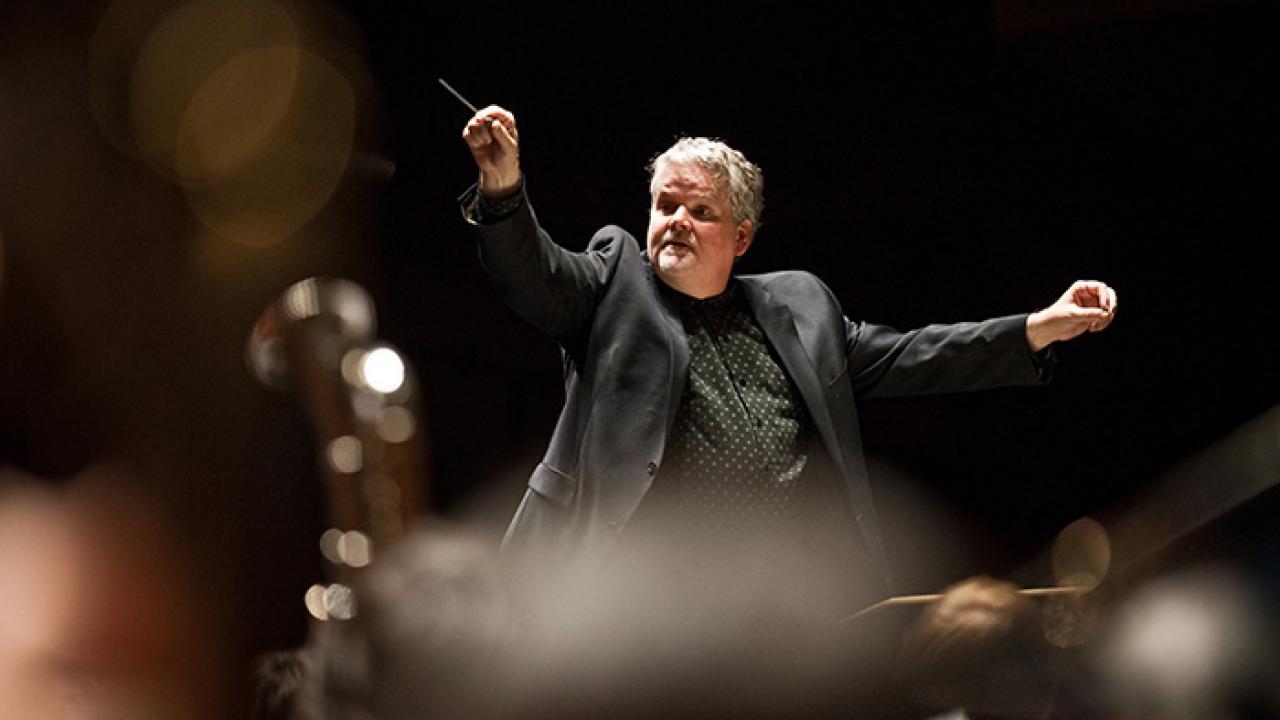Most people know a conductor stands at a podium and waves a stick to keep an ensemble in time. But what exactly does a conductor do? UC Davis Concert Band Director Pete Nowlen said he has three main responsibilities: keeping time, teaching and facilitating musical expression. “Good conductors provide secure foundations for their groups so that they can express themselves,” Nowlen explained.
Keeping time
The conductor starts and stops an ensemble, guides tempo and dictates style. Conductors keep time using a baton, and the movements they use change based on the style of the piece, how many beats there are in a measure and more.
“My main goal while I conduct is to make the gestures mean more than just time,” said Nowlen. “I always want to ensure that every gesture has a reason.”
Teaching
During rehearsals, UC Davis’ Concert Band learns new music with the help of the conductor, who fixes errors when they come up. The conductor is generally the only one in an ensemble who has access to the score, or the sheet music with everyone’s parts in it. “It contains the roadmap to the piece,” said Nowlen, referring to the score. “The conductor sees the music on the page and works to transmit those sounds to the group.” If a trumpet player comes in too early or the flute section sounds too loud, the conductor fixes these quirks with the score. But Nowlen also emphasized not using the score “to a T,” as doing so can hinder an ensemble’s ability to express themselves.
Facilitating musical expression
Nowlen explained that all elements of music are not to be solely interpreted by the conductor. As an ensemble becomes familiar with their pieces, performers can create nuances and uniqueness.
To ensure room for musical expression, Nowlen tries not to dictate every single second of the music. He also encourages the musicians to develop their playing styles, particularly through solos.
“Above everything, I want people to have the opportunity to express themselves through their own playing,” said Nowlen. “The conductor shouldn’t be playing ensemble members like they’re instruments, but rather allow the creation of a collaborative performance.”
